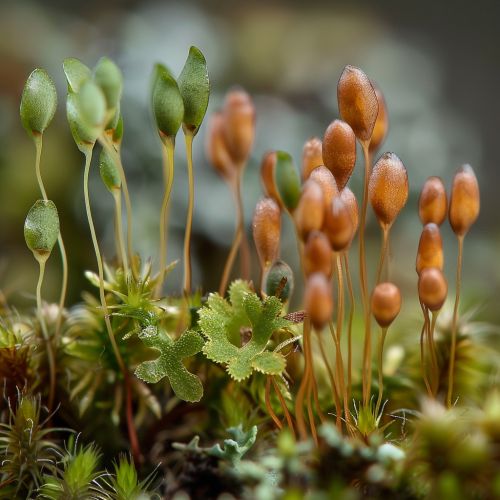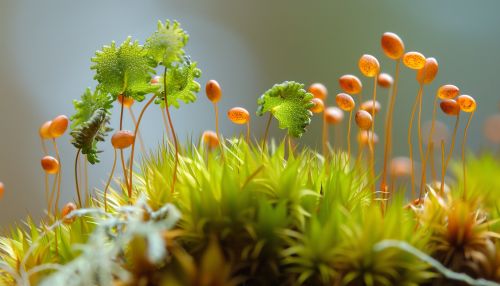Moss life cycle
Introduction
The life cycle of mosses is a complex and fascinating process that involves two distinct stages: the gametophyte stage and the sporophyte stage. This cycle, known as alternation of generations, is a characteristic feature of all bryophytes, which include mosses, liverworts, and hornworts.


Gametophyte Stage
The gametophyte stage begins with the germination of a haploid spore, which grows into a filamentous structure called a protonema. The protonema, which resembles a thin green thread, eventually gives rise to a mature gametophyte, the dominant and most visible stage of the moss life cycle. The gametophyte consists of leafy shoots that produce gametes, or sex cells.
Mosses are typically dioecious, meaning that individual plants produce either male or female gametes, but not both. Male gametophytes produce sperm in structures known as antheridia, while female gametophytes produce eggs in structures called archegonia.
Fertilization and Sporophyte Development
When conditions are moist, the sperm are released from the antheridia and swim through a film of water to reach the archegonia, where fertilization occurs. The fertilized egg, or zygote, remains within the archegonium and develops into a sporophyte.
The sporophyte is a multicellular structure that remains attached to the gametophyte, from which it derives nutrients. It consists of a foot, which anchors it to the gametophyte, a seta (stalk), and a capsule, where spore production occurs.
Inside the capsule, cells undergo meiosis to produce haploid spores. This process is initiated by the maturation of the sporophyte and the drying of the capsule, which triggers the release of the spores.
Spore Dispersal and Germination
The release of spores is a critical step in the moss life cycle, as it allows the moss to colonize new habitats. Spore dispersal is facilitated by a variety of mechanisms, including wind, water, and animals. Once the spores land in a suitable environment, they germinate and grow into new protonemata, thus completing the cycle.
Ecological and Evolutionary Significance
The moss life cycle has important implications for the ecology and evolution of these plants. The alternation of generations allows for genetic diversity and adaptation to different environments, while the ability to disperse spores widely contributes to the mosses' success in colonizing diverse habitats.
